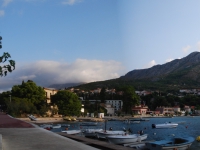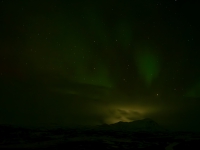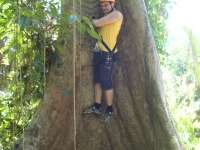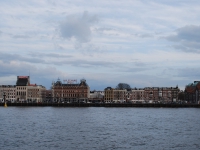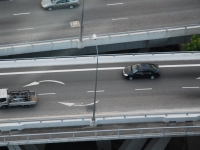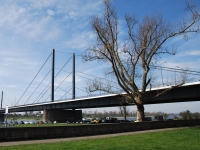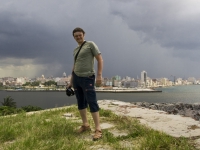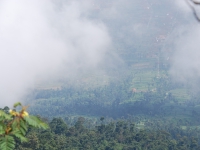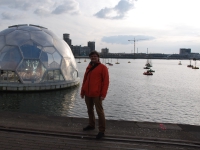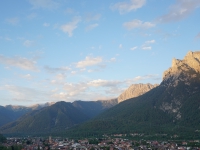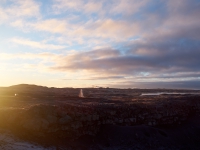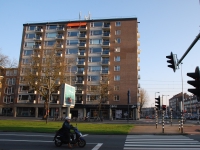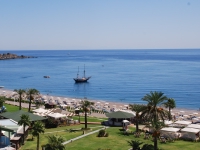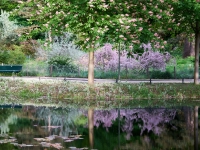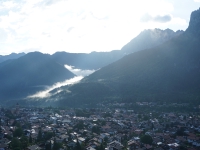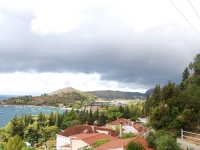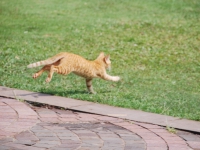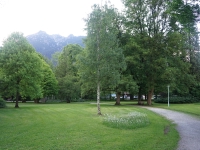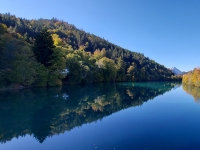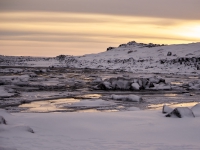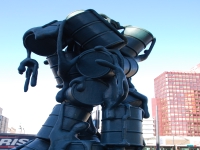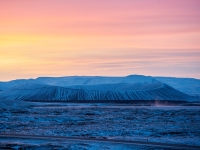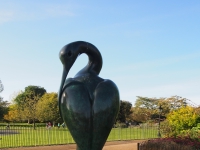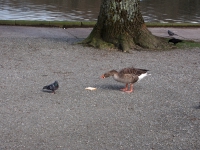Journey around Iceland
The term grill-tourism has been well-established in my lexicon for a long time — this is a type of holiday where a tourist isn’t actively involved in the planning of his trip. A tour operator drives a tourist like a roasted chicken in a bus-oven from a hotel to points of interest and the tourist’s goal is either to lie on the beach and be covered in a crispy sun-tan crust, or gazing out of the window while seated on a bus. Or even there isn’t a tour operator and you are just lying for a week under the sun in a chaise longue in an all-inclusive hotel. It’s grill-tourism as well. This term used to have a strictly negative meaning to me, but now it has become more neutral: sometimes you just want to switch off your brain and do nothing. There is nothing wrong with it, but it’s important to mix grill-holidays with more eventful itineraries, since grill-tourism is monotonous and tedious.
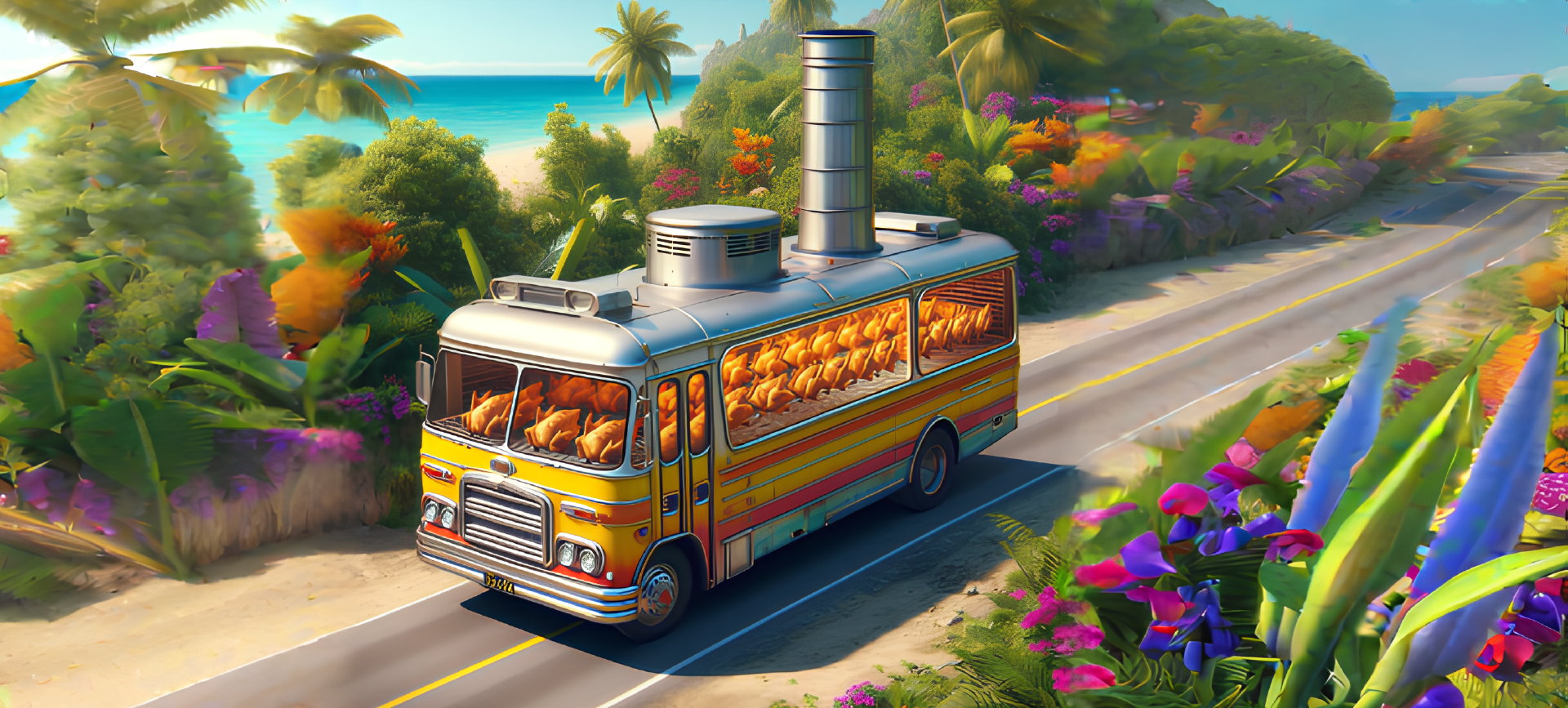
Through recent observations (and also based on some of my own adventures) I’ve extracted one more category of holidays — checklist-tourism. The goal of a checklist-tourist is to see as many things as possible and to set as many check marks as possible in an imaginary (or maybe in a real) checklist at all costs within a single short trip. On the one hand, you really can see a lot, but on the other hand — you’re always in a rush, you don’t have space to manoeuvre and you can’t afford to spend more time in a place you like. It’d be better to avoid checklist-tourism: memories from such trips fade and are squashed into one evenly grey lump of plasticine and over time you can no longer separate one episode of the adventure from another.
With these two vacation types in my mind I’d approached the planning stage of my trip to Iceland. Prior to the journey, my perception of the country was superficial and romanticised, as if it were a snow-covered island out of a fairy tale. This perception was amplified by a plethora of blog posts and photos from the internet, showing truly incomparable scenes that reinforce this image: ice caves with the walls lumining from the inside, the Northern Lights, beaches of black sand and shards of ice sparkling in the sunlight. However, the vast majority of these exceptional scenes are nothing more than marketing tricks aimed at attracting tourists; rare shots taken by professionals at a brief and fortunate moment.
What to do in Iceland?
In short, itinerary planning nowadays is complicated by the fact that the real pearls have to be sifted out from the marketing noise. So I am going to write about some of the interesting things I’ve learned about Iceland.
There are about 360 thousand people living in Iceland and almost half of them are in Reykjavik. In other words, it’s definitely the kind of place one should avoid at all costs, since the feeling of solitude is one of the reasons why I think it’s worth travelling to Iceland. The overall population density across the entire island is about 3.5 individuals per square kilometre, whereas in the capital city, the density reaches 490 people per square kilometre. For comparison, the population density in Berlin is approximately 4000, and in Moscow it is about 5000 individuals per square kilometre.
There are 130 volcanoes grouped into 30 volcanic clusters here and they erupt occasionally. Local companies organise excursions to the erupting volcanoes! Observing streams of live lava is a truly unique and once in a lifetime experience. It’s hard to imagine where else on Earth one could go for such an adventure. Apparently, however, aligning your itinerary for the eruption is either a matter of immense luck, or a substantial amount of freedom to book a last-minute vacation and fly directly to see the eruption sight.
The picture below I found on the internet. This is how an excursion to the erupting volcano could look like, save for the photoshopped lava.
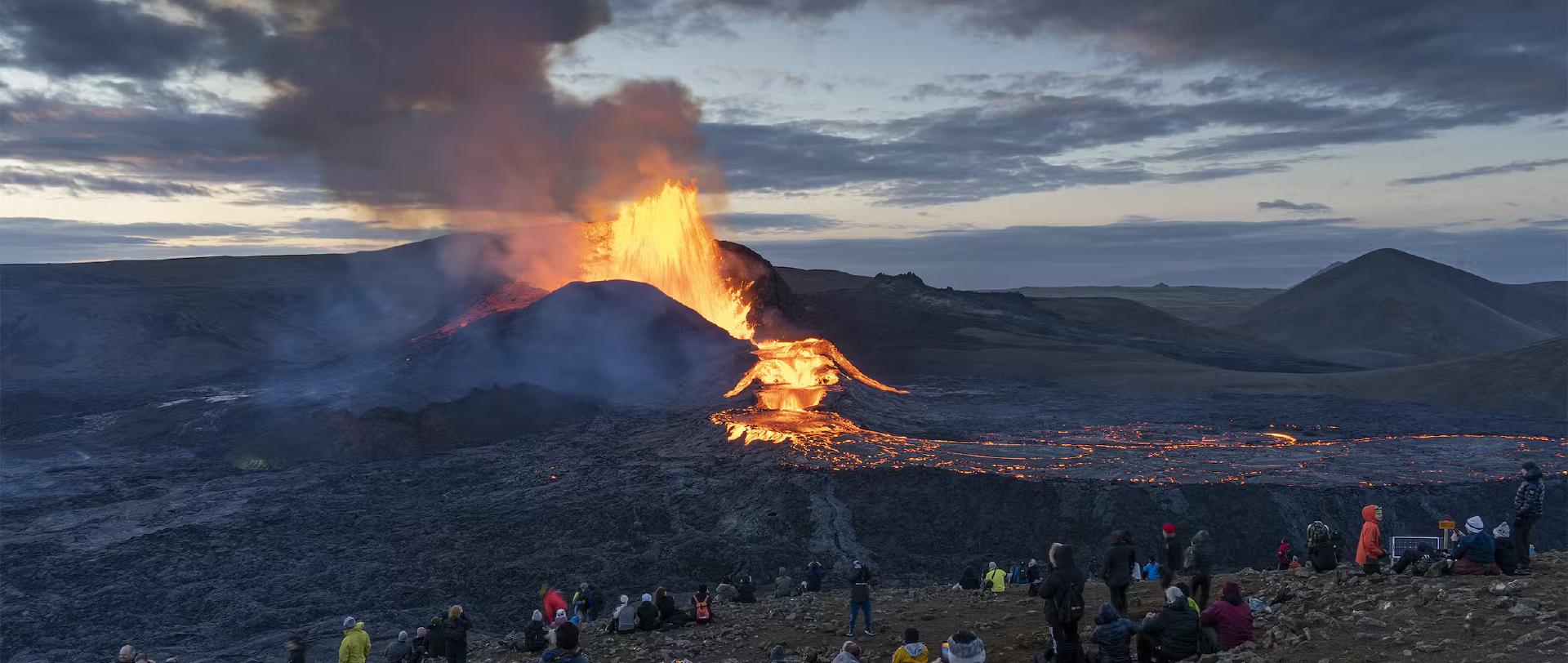
Apart from volcanoes there are geysers as well. By the way, all the geysers in the world are named after the geyser Geysir that is located near Reykjavik.
There are several large extraterrestrial-looking glaciers, ice caves, rivers and waterfalls. One of the glaciers was used as a setting for two planets in the movie Interstellar (undoubtedly the best science fiction movie ever made).
Besides Interstellar, there are many other movies that have been filmed in Iceland. The movie “The Secret Life of Walter Mitty” was one of the reasons why I decided to drive along the desolated Icelandic roads. Around the island, closely following the coastline, is Route 1 — a ring road stretching about 1300 kilometres, granting access to nearly all the local landmarks throughout the year. Some of the island’s roads are closed in the winter, so it’s important to bear that in mind when planning a route.
Golden Circle and Diamond Circle are two popular tourist vehicle routes. The first is close to Reykjavik and the second is in the north-east of the island, close to Lake Myvatn and the waterfalls Dettifoss and Selfoss. Both routes can be completed from one to two days and the second one is more scenic, since it’s further away from the capital and crowds of tourists.
Waterfalls! There are several of them here and they are not just typical mountain brooks gently dripping from a few metres, they are powerful, expansive rivers! Europe’s mightiest waterfall, Dettifoss, spans 100 metres in width, and its torrents cascade from a height of 44 metres!
Aurora borealis — the Northern Lights can be observed in Iceland. This was the reason why I decided to visit Iceland in November; the prime Aurora season which runs from November to February.
Surprisingly, diving and snorkelling are available here! Yes, the water temperature in November is below 10 degrees, so a dive requires a drysuit and the appropriate preparation. But anyway, it’s still a viable option!
Fauna: whales, seals, birds, deer, horses. Many activities here involve animals, but November is not the peak season for such entertainment.
If your wallet permits (on average the typical European prices can be safely doubled in Iceland), you can rent a helicopter to fly to the summit of one of the local mountains.
Another type of attraction is the natural baths — outdoor pools where the water is drawn from underground boreholes and has a temperature of 36-40°C, depending on the location. It’s quite an exotic contrast — you walk out from a warm changing room to the fresh air where the temperature is below zero, waddle about 10 metres, and jump into a hot pool. The opposite of a Russian sauna :)
Iceland is one of the few places with very little artificial light. This makes driving very difficult at night, which falls around 6 p.m. in November. On the flip side, a large part of the island has a Bortle scale index from 1 to 3, allowing you to see the Milky Way with the naked eye… as long as the sky remains cloud-free.
Planned route
Iceland is a place where a grill-tourist has nothing to do, all the activities there imply activity: a lot of driving with even more outdoor hiking under the pouring icy rains and penetrating cold winds, requiring a high level of energy.
Even a month wouldn’t be enough to try everything I mentioned above without a rush. I had only 10 days, so to not turn into a grill-tourist I had to significantly cut down the list. Finally, I came up with the following route:
- Fly to Reykijavik, it’s located on the west side of the island, and the very next day with a domestic airline fly to Akureyri, a town on the north-west of the island,
- In Akureyri, rent a car and explore the surroundings of the Diamond Circle: the Myvatn Lake, geysers and waterfalls, and natural baths. All these things are here and they’re not as heavily crowded with tourists as Reykjavik’s area. Every night observing the Northern Lights,
- Then drive to the south of the island to the Vatnajökull glacier area and spend a few days there. Stay in a guest house on a farm, which is located barely 50 kilometres away from civilization! It is supposed to be an unmatchable experience: stay in an isolated place, hike the glaciers and black sand beaches by day, and watch the Northern Lights by night,
- After 3 days there, drive back to the west, towards Reykjavik to explore its surroundings and watch the Northern Lights. Then return the car and fly back home.
Of course, not everything went according to plan, and I’m going to tell the story of this adventure.

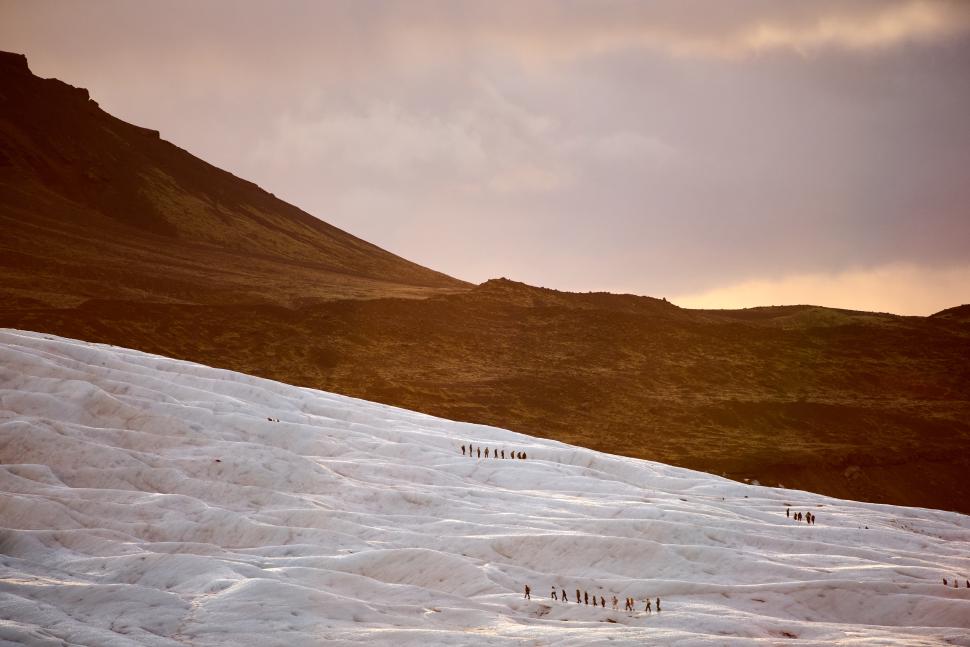
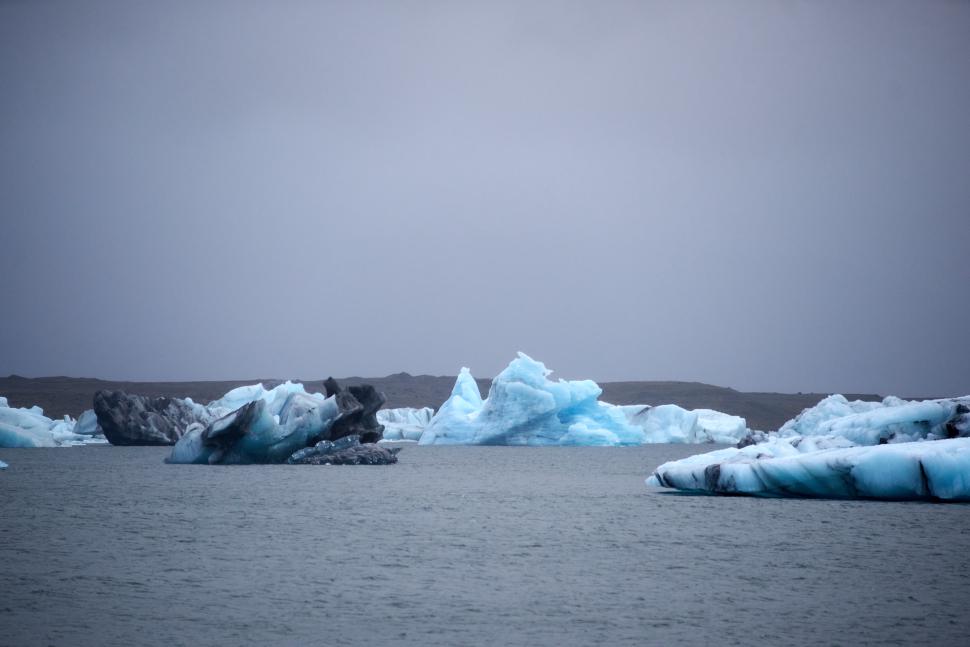
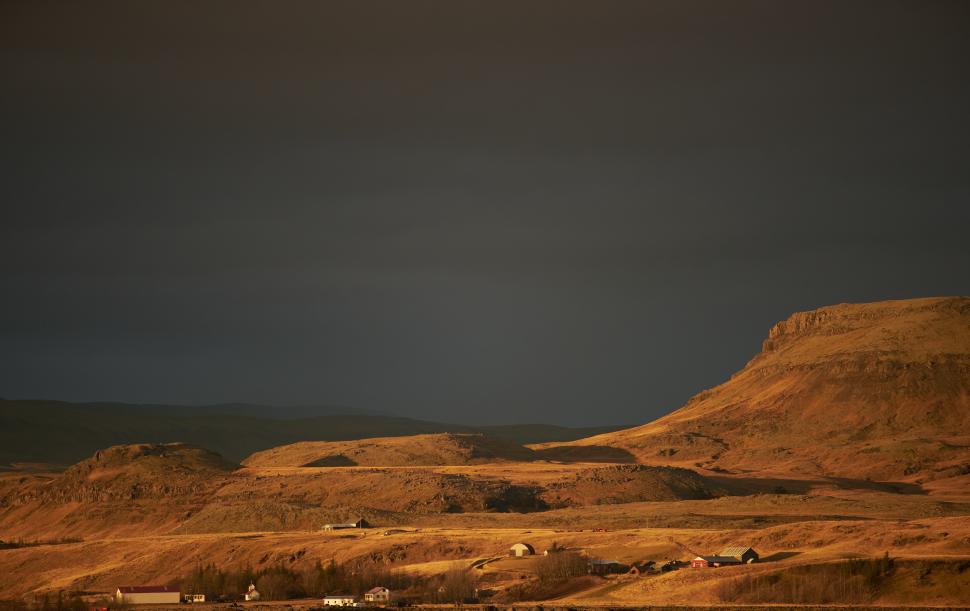
Part 1. Reykjavik and Akureyri
I flew to Reykjavik on Friday afternoon, that’s why I had to take an additional day off work. The thing is, international and domestic airports are located in neighbouring cities and it was more convenient for me to fly to Akureyri one day after arriving in Reykjavik. However, the problem was that the rental-car company office wasn’t open on Sundays! That’s why I had to get to Akureyri on Saturday. It may seem like a minor detail, but the itinerary had to be adapted.
A taxi from the airport to the city would have cost 150 Euros. It’s not that I’m greedy, but I chose to take the bus to the city for 30€. Here I made my first mistake: I had to exchange Euros to Icelandic Kronas in the airport, but I was in a hurry to catch the bus and forgot to do it.
Reykjavik didn’t impress me, it’s a typical greyish northish novemberish city: bars and restaurants, monuments, pedestrian streets and embankments. Everything is like everywhere else. There is absolutely no sense at all in going to Iceland only to visit Reykjavik, and highly likely, no one does just that.
The domestic airport is located right inside the city, and fortunately for me I stayed only a couple kilometres from it. I say “fortunately” because my flight to Akureyri was at 8:30 a.m. and I planned to go to the airport, as I usually do, 2.5 hours in advance, but public transport doesn’t run so early and taxi-drivers accept only cash, which I didn’t have :( so I had to lug my suitcase on foot.
Dragging myself so early to the airport was a mistake as well. Here is a photo of the domestic airport below. Here I have literally captured half of the airport. It opens one hour before the first flight, which is 7:30 in the morning, and check-in starts 45 minutes before the flight. In international airports by this time check-in is usually closed. All in all, I had to endure 1.5 hours in the cold alone. Thankfully, I had a tripod and a foldable chair, so I took the first of the few photos of myself on this journey.

On the very first day of my arrival in Iceland, something happened I couldn’t even have dreamt of; an earthquake occurred 40 kilometres away from Reykjavik and it had to have triggered a volcanic eruption which I eagerly awaited. I had a chance to witness it with my own eyes! According to the forecast, it could happen at any moment within the coming days or weeks. The only thing I could do was to wait and hope for the best. The phrase “hope for the best” may sound egocentric in the context of a natural disaster that can destroy a whole town, but for Icelanders it’s an ordinary event and an eruption would have happened regardless.
Despite the earthquake, I reached Akureyri without any troubles, picked up the car, drove around the town and by the evening got to a hotel near Lake Myvatn. It was the only place in Iceland where I had to talk to a person at reception. In all the other places they had a self check-in: they either left a key right in the door of my room, or emailed me a code for an electronic lock.
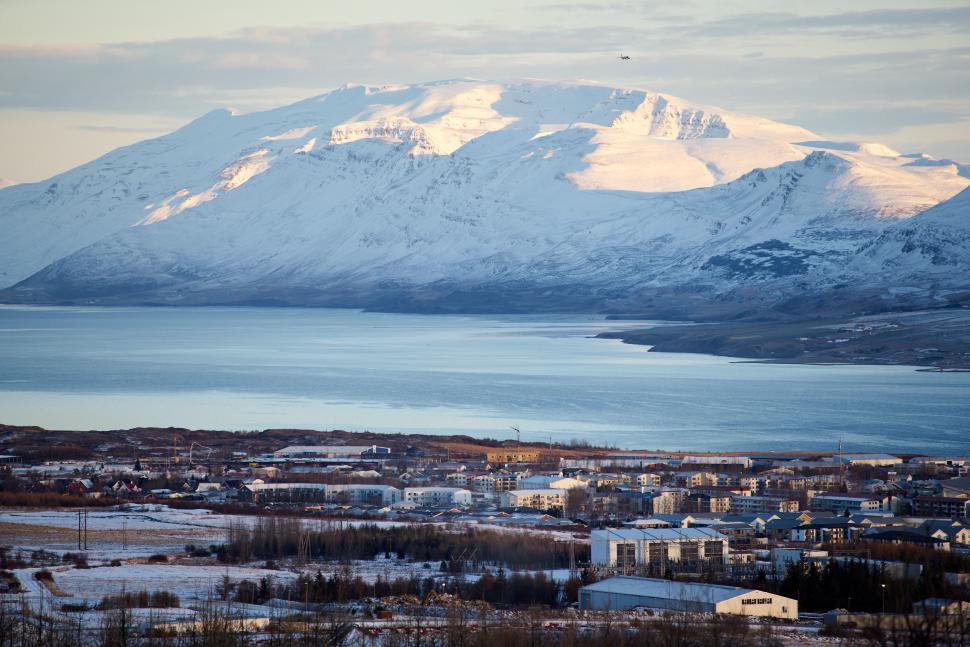
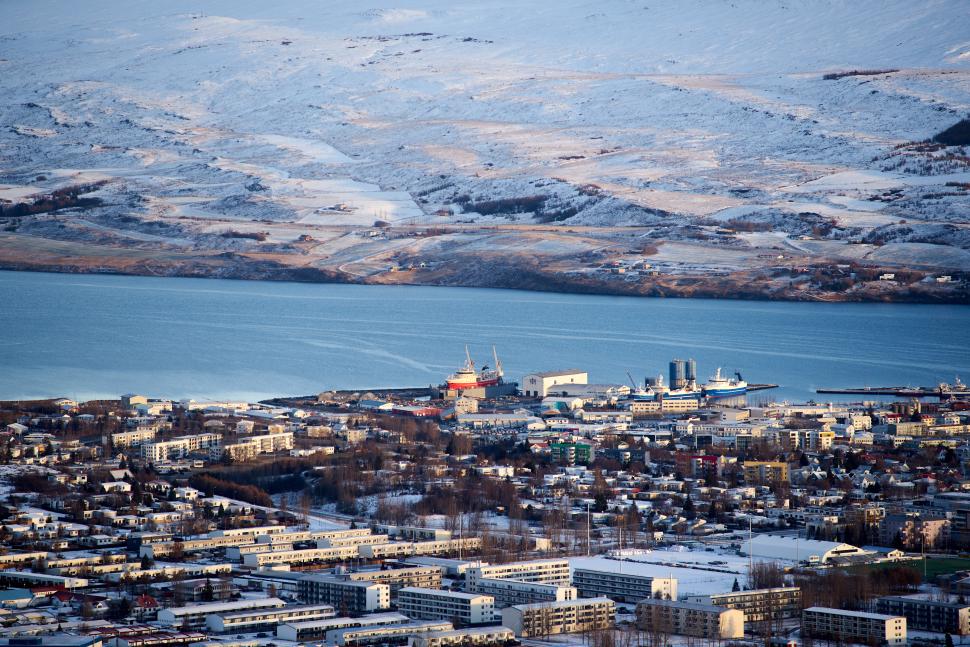
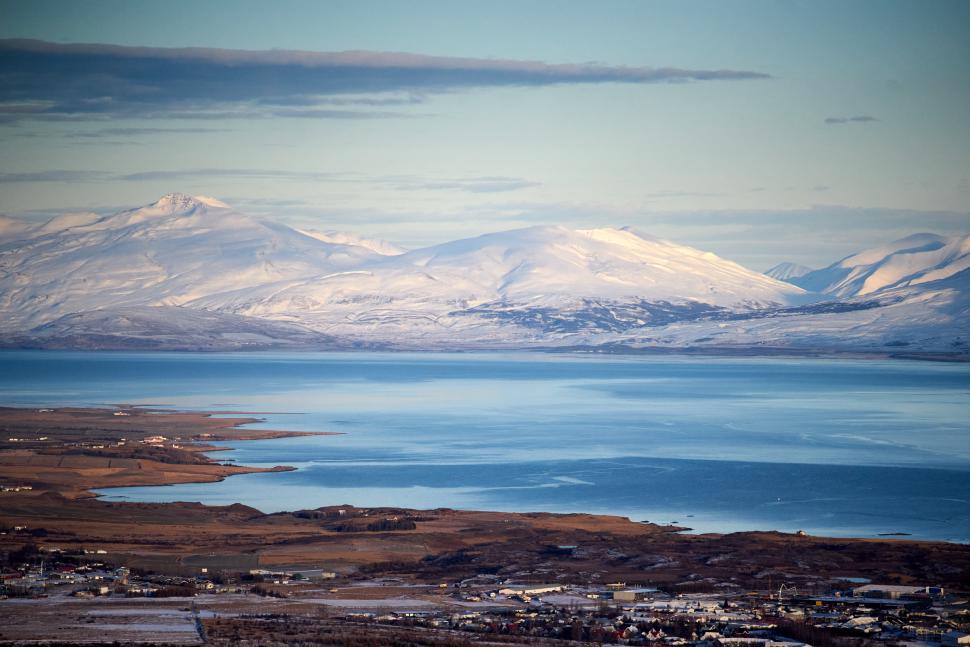
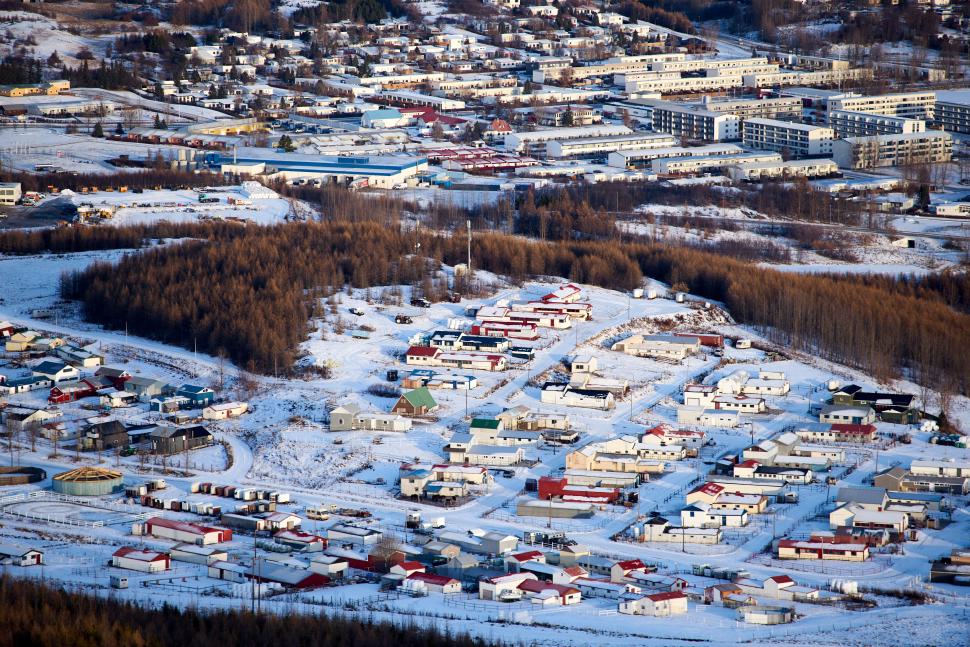
Part 2. North of Iceland: Lake Myvatn and Diamond Circle
I thoroughly prepared for the trip in many aspects, including those related to observing and capturing the Aurora. Apart from other things, I’ve installed two applications showing the Kp-index (global geomagnetic activity index) and some other parameters, which reflect the probability of the appearance of the Northern Lights. The Kp-index ranges from 0 to 9 and in Iceland with a Kp-index of 4-5 the probability of seeing the Aurora is about 30%, with an index of 6-7 the probability is about 50%.
The Northern Lights appear from 100 to 400 kilometres above the Earth, so it can be easily spoiled by clouds. That’s why I also used a local weather app, that quite precisely showed the forecast of all the weather parameters, including a cloud forecast.
The day was quite packed, the weather was cloudy, and the Northern Lights forecast — weak, so I didn’t wait for it and went to bed early. In the morning one of the most picturesque sunrises I had ever seen awaited me. I’ve already mentioned that nightfall in Iceland in November begins at about 6 p.m. and the Sun rises at about 9 a.m. It’s very convenient, you don’t need to wake up at 5 in the morning to take beautiful pictures.
While photographing the sunrise I explored the area around the hotel, which is literally located in the middle of borderless nowhere, and found a good place to view the Aurora at night.
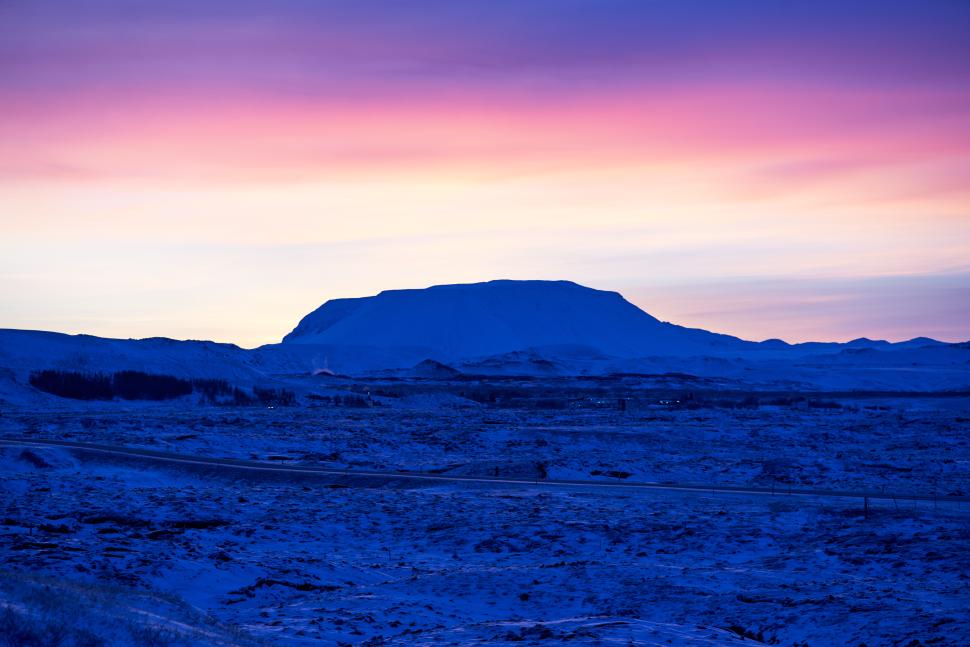
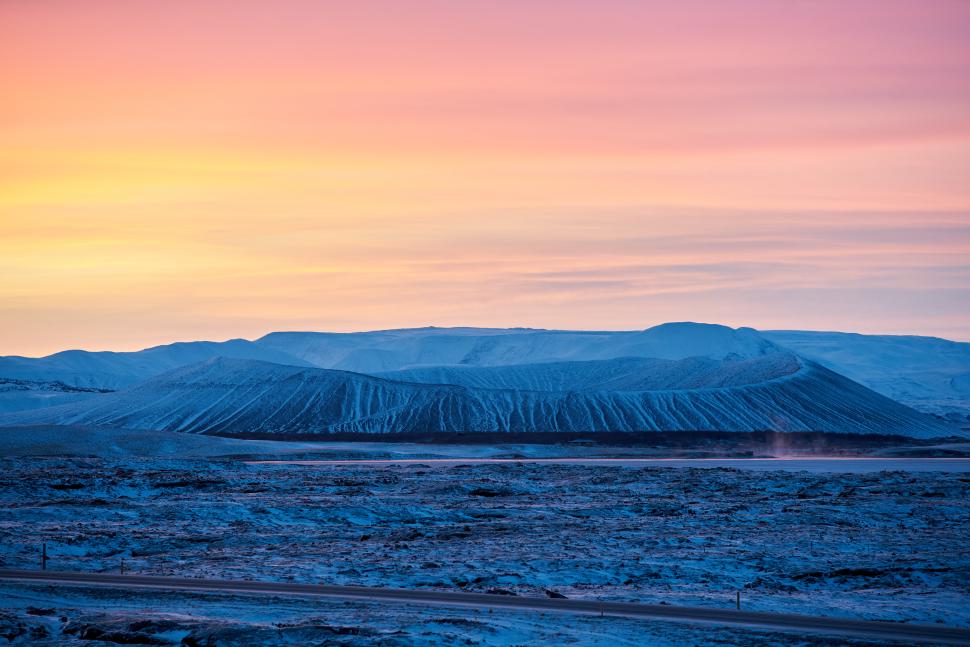
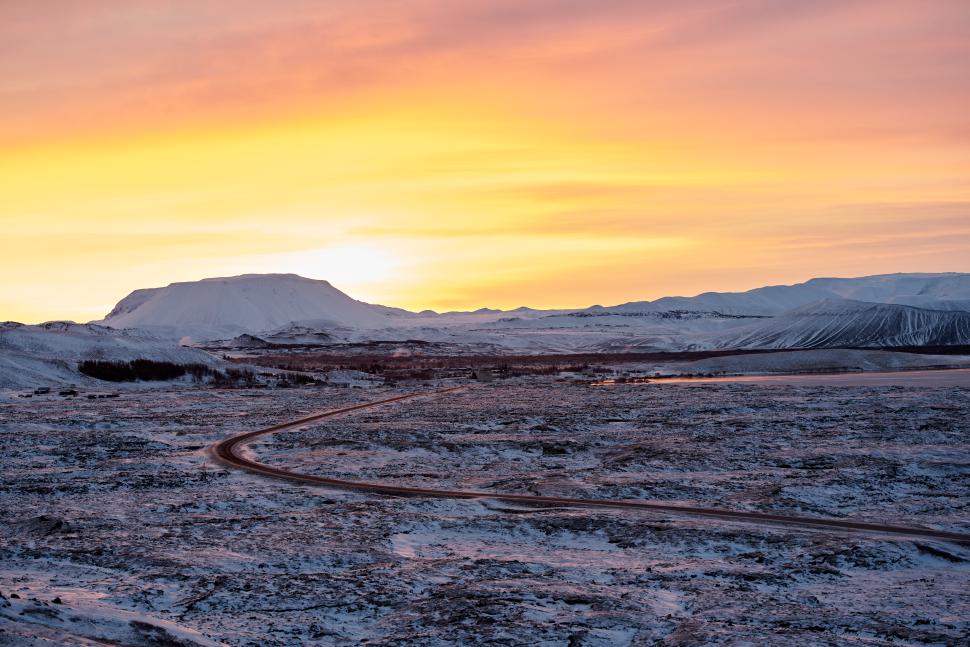
After breakfast, enjoying the sunrise and checking the news for “did the eruption go bang” I drove to the first of the planned sights of my trip — waterfalls Dettifoss and Selfoss.
Roads in the north of Iceland are white and deserted, and views are unconfined. Driving a car in such conditions is a relaxing and meditative process. But it’s important to remember that a large number of bridges in Iceland are single-lane. It’s not a single lane in each direction, it’s a single lane for the whole bridge. That’s why it’s dangerous to give in completely to the flow of your thoughts. Before crossing the bridge it’s necessary to check that no one else was already crossing the bridge from the other side. One time, I stopped to give way to a car coming towards me on the other side, I waited for about 3 minutes and after seeing no movement on the bridge I decided to go first. The other driver had been waiting for me on the other side :)
Generally, waterfalls can be approached from two sides — western and eastern, and I wanted to get to them from the eastern side, I had expected to see more impressive views from that side. However, much to my disappointment, the road from that side was closed. Well, “closed” is a bit of an exaggeration in this case, there was just a sign and the road behind it looked pretty good. But the text on the sign stated that addressing the car issues beyond this point will be expensive. All in all, I decided not to risk it and drove to the western side of the waterfalls.
On my way to the waterfalls I also made an additional stop at Hverir, it’s a geothermal area that is covered with boiling puddles of sulphur, and the air there is saturated with corresponding aromas. This is not an ordinary place, but because of the smell I didn’t want to spend a long time there. Here I faced for the first time how parking works in Iceland in such touristic places. It should be paid either in the terminal or with a special mobile app. Convenient! But it’s not the most important thing. What’s important is that parking has to be paid for a minimum of one day, even though a tourist will spend no more than a couple of hours at such a place. In the case of Hverir, even 40 minutes was more than enough for me :/ Parking costs 1000-1200 Kronas (7-8 Euros) per day, not expensive, but anyway it seems that the requirement to pay for parking for a whole day is a kind of scam.
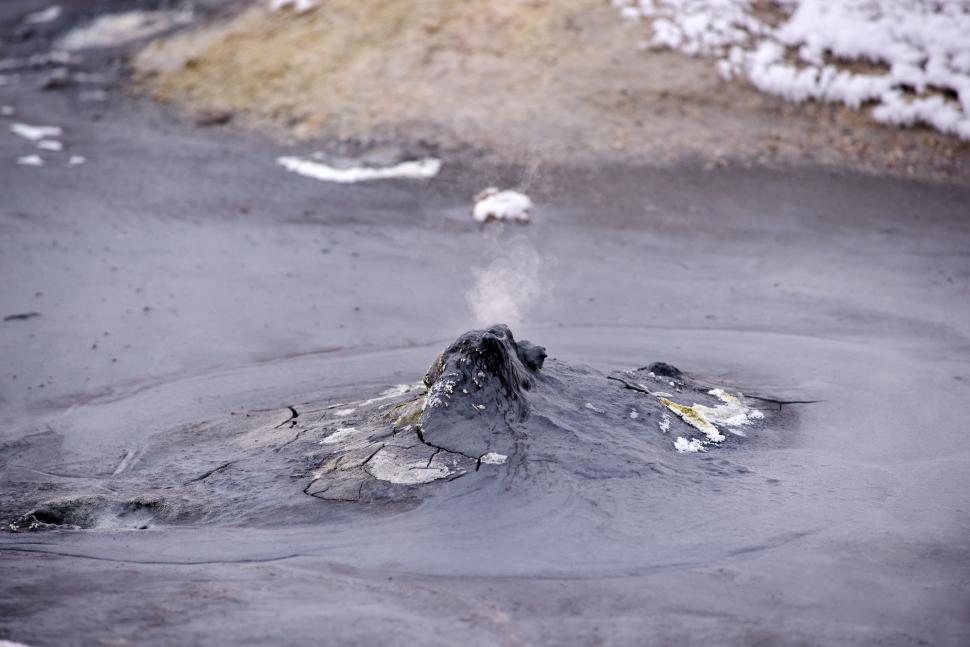
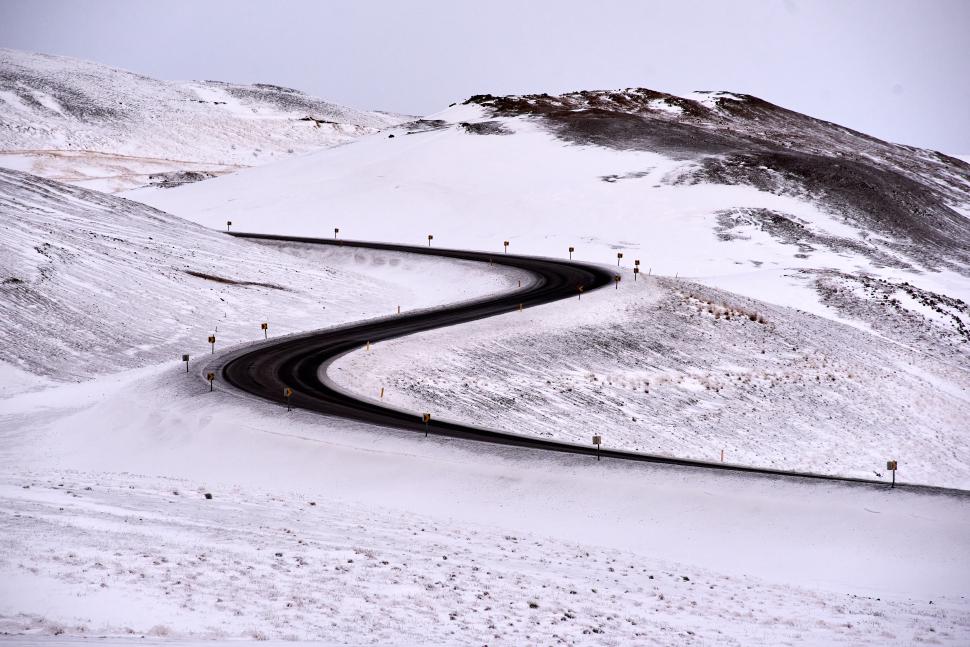

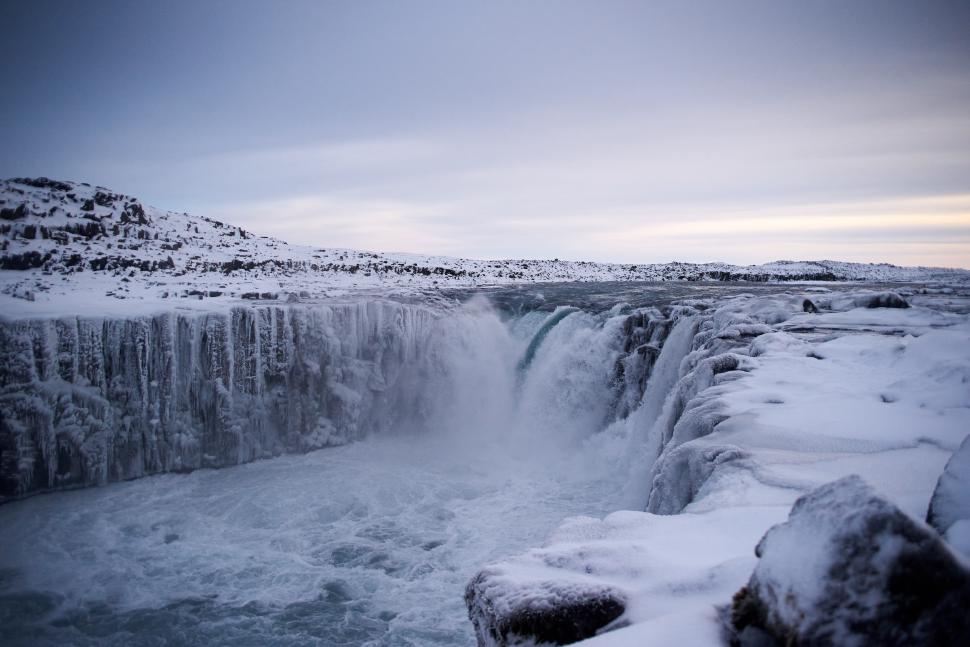
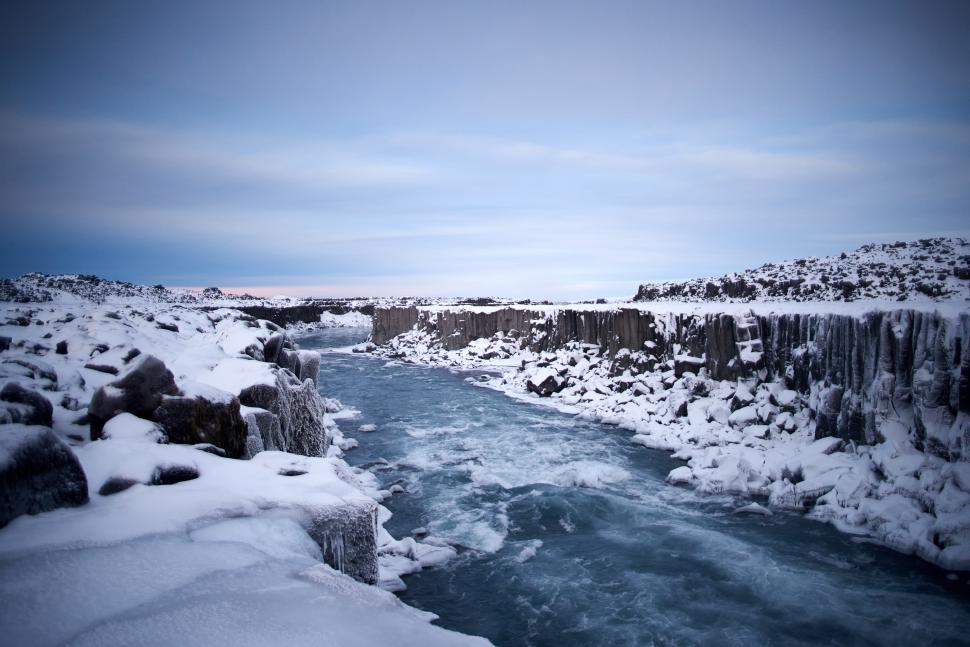
The waterfalls Dettifoss and Selfoss are part of the Jökulsá á Fjöllum river. Selfoss is upstream and cascades down from a height of 11 metres, forming a fairly deep canyon about 100 metres wide. A few hundred metres downstream is Dettifoss at a height of 44 metres. It’s a truly extraordinary sight! Undoubtedly, this is a must-visit place in Iceland.
All the necessary tourist infrastructure is built at this place: parking, hiking trails, and toilets. Unfortunately, due to the weather, most of the hiking trails were closed. In summer one can go down to the river but in winter it’s possible to only walk along the upper edge of the canyon. However, this is where most of the scenery opens up.
The same day after the waterfalls I went to the Ásbyrgi canyon and this is without a doubt a 100% summer place, in November it’s quite grey, dark, cloudy and gloomy.
Daytime driving in northern Iceland is a pleasure, whereas in the evening driving turns into a challenge. There are no street lights along the roads here and the way can be determined only by the reflective stickers on the poles placed on the side of the road. You’re essentially driving in total darkness besides two rows of faint lights which can suddenly disappear. This means that there is a turn ahead and you need to carefully watch where the lights are turning.
The Northern Lights forecast that day was bad, so upon returning to the hotel, I went to bed. I accidentally and randomly woke up at 3 a.m. and decided to check a Kp-index. As fate would have it, it was astoundingly high; 7 out of 9! I leaped out of bed and ran to the window, and there she was! Aurora! My first thought was “I have to get dressed quickly, grab the camera and run to see it!” and immediately followed by my second thought: “Oh, come on! It’s cold outside and you have a whole week ahead, you will have plenty of time to see it. Get back to your warm and cosy bed”. It was truly a legendary battle between lazy sleepy me and curious sleepy me. Curious sleepy me won that battle. To my disappointment, by the time I reached the vantage point I had chosen the previous morning, the Kp index had dropped to 5, and the lights were not as spectacular as they had been from the window.
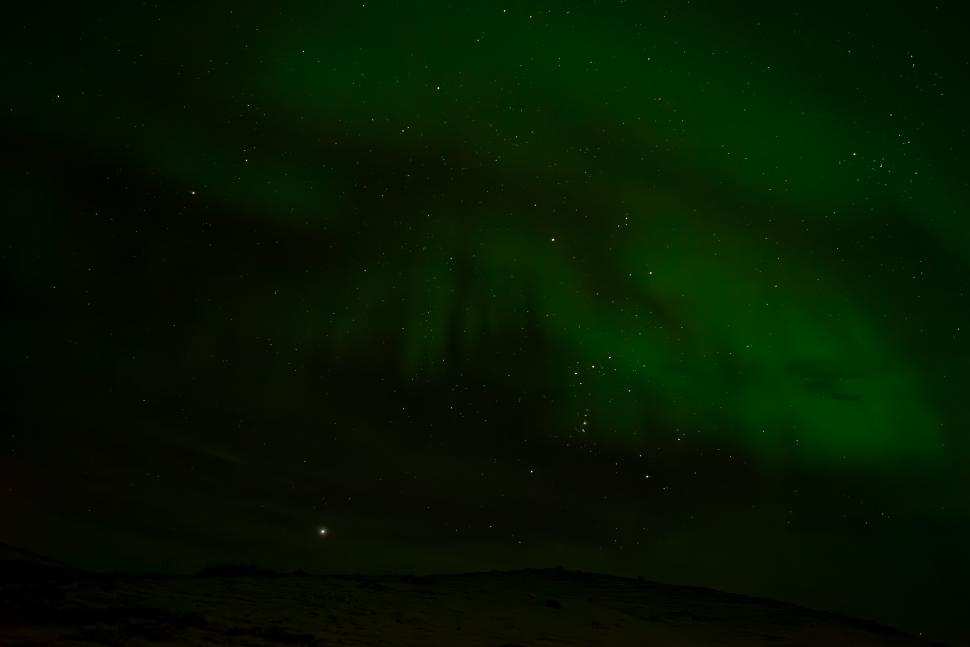
The next morning began with checking the news to see if the volcano had erupted or not. It hadn’t, which was good, because the volcano was two days away from my current location, and I didn’t want to rush there at that moment. The main goal for the day was the Myvatn Nature Baths — outdoor pools with water sourced from an underground well, which I mentioned earlier.
Before going to the baths, I drove around the lake, but it was a cloudy day and I didn’t see anything memorable. It seems that this place is better visited in summer. However, the baths gave me a very authentic experience. I spent about 3 hours there: pools (in the hottest one you can soak to the state of a boiled potato, and in the coldest one I could spend only a few minutes), saunas, ice-cold air with a temperature of -1°C. I think the most comfortable temperature for swimming here is 10°C, and in those conditions my ears were getting cold all the time, so I was missing a hat. But on the other hand, if the air had been warm, this experience wouldn’t have been so unique.
Close to Reykjavik there is a similar place — Blue Lagoon, generally this place, like everything else in that part of the island, is much more crowded, although during my trip it was the other way around — it was closed due to the risk of the impending volcanic eruption. So I would add Myvatn Nature Baths as another recommended destination (oh no! I’m ticking off the checklist!!!). It’s worth mentioning that I was lucky and most of the time I was there the pools were almost empty, sometimes I was even alone, but before I left a bus full of Chinese grill-tourists arrived and they turned a quiet lagoon into a noisy, hectic mess.
After a few hours of boiling myself in water, I first spent an hour cooling off in the cafeteria and then barely got to the hotel. I had no energy left for anything, and even if the Kp-index had been a nine, no one could have forced me to go outside to see the Northern Lights.

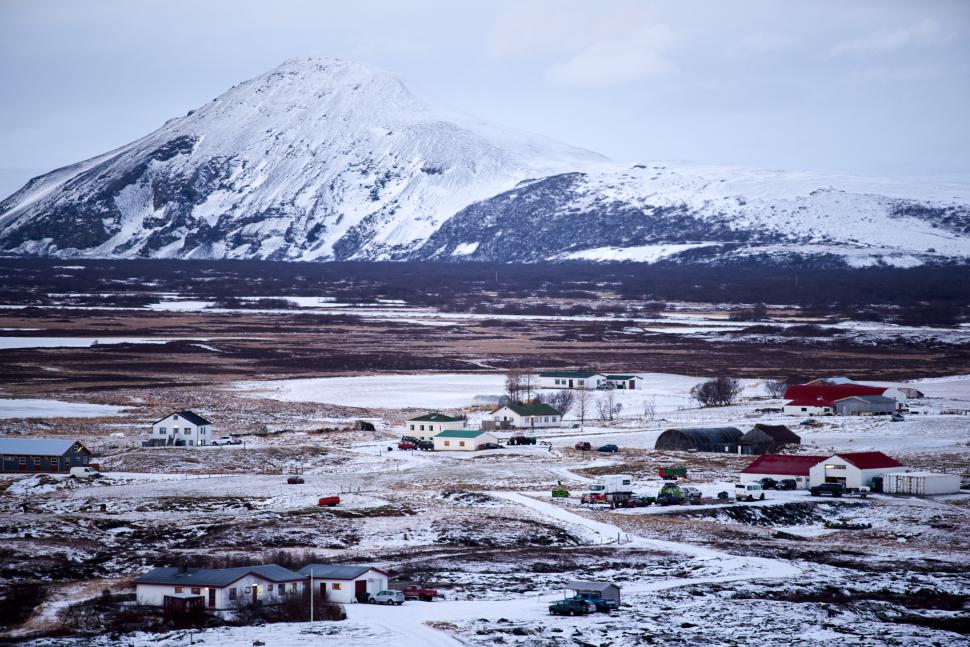
Part 3. South of Iceland: Vatnajökull glacier and its surroundings
The next day I embarked on a trip to the southern part of the island, to the guest house on the farm near the Vatnajökull glacier. At one point I literally crossed the border between the north and the south of the island; the open spaces covered with white snow sparkling in the sunlight, in just a few hundred metres, shifted to brown-grey rainy sceneries. The rest of the journey mostly looked like that :/
From Iceland to Rainland. And one more link to another video from the car’s roof.
I had overly optimistic expectations for this place. I had hoped to experience what life on a real Icelandic farm was like, whatever that means, because I knew nothing about it. In my imagination I saw blurry pictures of authentic cabins, traditional breakfasts and cattle apathetically grazing right by the entrance to the house. Instead of that, a cold hangar, full of Chinese tourists, on the outskirts of the farm awaited me. No farm ambiance at all.
The feeling of solitude was also unachievable despite the closest civilization being 50 kilometres away from this place; the farm guest house had a high concentration of homo touristus and the chaos that follows them. In short, it would have been better to stay in a regular hotel rather than in this hole. At least I wouldn’t have had to drive for 40 minutes to have lunch. But, frankly, all of these disadvantages aren’t worth the time you spent on reading these lines. The way to this place took a whole day and the next morning in my plan I had an excursion to the Vatnajökull glacier and this was one of the most vivid and memorable adventures on this journey.
There are many tour companies here organising excursions to various parts of Vatnajökull. I feel uncomfortable in large groups of people, so I chose a tour to an ice cave with a group of up to 8 people, and in the end, there were even fewer of us; 5 tourists, including me, plus the guide. In theory, you can organise such a route independently, but in that case, it requires very detailed planning, and I would recommend starting with a group tour anyway and asking the guide for details on when and where it’s best to go alone and what nuances to consider when planning.
Before the trip to Iceland I’d bought all the necessary equipment: warm trekking shoes, wind- and waterproof pants, a jacket and a backpack. However, all this is not enough for conquering the glacier. We were given helmets, crampons, a harness, a special loop for the harness about a metre long, and an ice axe. “It’s over cautious”, was my first thought, but no, we actively used all of this equipment.
The first part of the route involved climbing the glacier. Here, it’s necessary to mention one important but not obvious detail. From a distance, the glacier looks like a mountain covered with a layer of ice. People who get used to Russian winters won’t find anything unusual in that; ice in winter is not a surprise. However, this is only the case if you don’t think about the thickness of the ice. It may seem that this layer is a few centimetres or metres thick, but in reality, the average thickness of the ice is 420 metres! Four hundred! Twenty! Metres! In other words, you’re not climbing a mountain covered with a layer of ice, you’re climbing a mountain of ice!
While moving across the glacier’s surface, we extensively used crampons (with every step you had to stomp your feet hard to break through the ice and not slip on its surface) as well as an ice axe to cling to it when climbing up steep inclines. The guide did a lot of work: on the most difficult ascents he hammered steps in the ice for us.
On one of the summits, the second stage awaited us: a descent to the ice cave, and it turned out to be the most entertaining part of the excursion. An alpine rope had been stretched along the slope in advance, for every 10-30 metres it was nailed into the ice with a special anchor. Using loops attached to our harnesses, we hooked ourselves to this rope and descended down it. When reaching the next anchor, we had to detach from the rope and reattach on the other side of the anchor. For safety reasons, only one person was allowed to be between two such anchors, so our entire group spread out over 50-100 metres. Every time you re-hooked yourself to the rope you had to signal to the person behind you that they could also continue on their way. This signal was a shout of “MOZZARELLA!!!”.
I imagine how amusing it could look from the outside: “MOZZARELLA!!!” — someone shouts from somewhere ahead, click, disconnecting from the rope, click, rejoining from the other side of the anchor, “MOZZARELLA!!!” — now it’s your shout, and a few seconds later, echoing from somewhere behind, the other “mozzarellas” respond. After about 15-20 “mozzarellas”, we reached the final stage of our route — an ice cave.
This cave was carved into the glacier by the air being pushed out by the flow of a mountain river. It’s located on the mountainside, that’s why the cave isn’t flat but inclined. Sunlight from the outside paints its inner surface in a vivid blue, and the light that penetrates through the ice makes the cave walls lumine and glow from within. According to the guide this place looks different in the summer: the scene we witnessed is enhanced by water streams cascading from the ceiling, formed by melting ice. In short – an Instagrammable spot.
The cave’s depth, by my estimation, is about 20 metres, and as we descended further, it got darker. Towards the end, without torches, we couldn’t see anything. The climb down wasn’t straightforward: we crisscrossed water streams, slid down large boulders, and jumped from big stone to stone multiple times. Our ice gear, excluding helmets, wasn’t very helpful. Once out of the cave, we had a break, a snack, and then returned the same way we came in. “MOZZARELLA!!!”
The entire route took about 6 hours and was quite physically demanding, although I had expected it to be harder. It’s definitely an ideal place for a winter journey! Exploring the surroundings of Vatnajökull one should spend at least 2-3 days exploring its various areas.
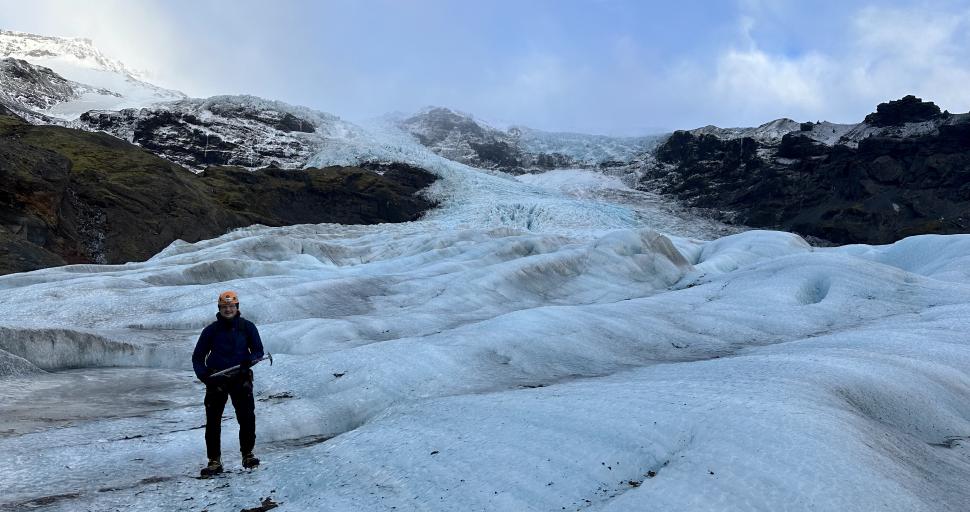
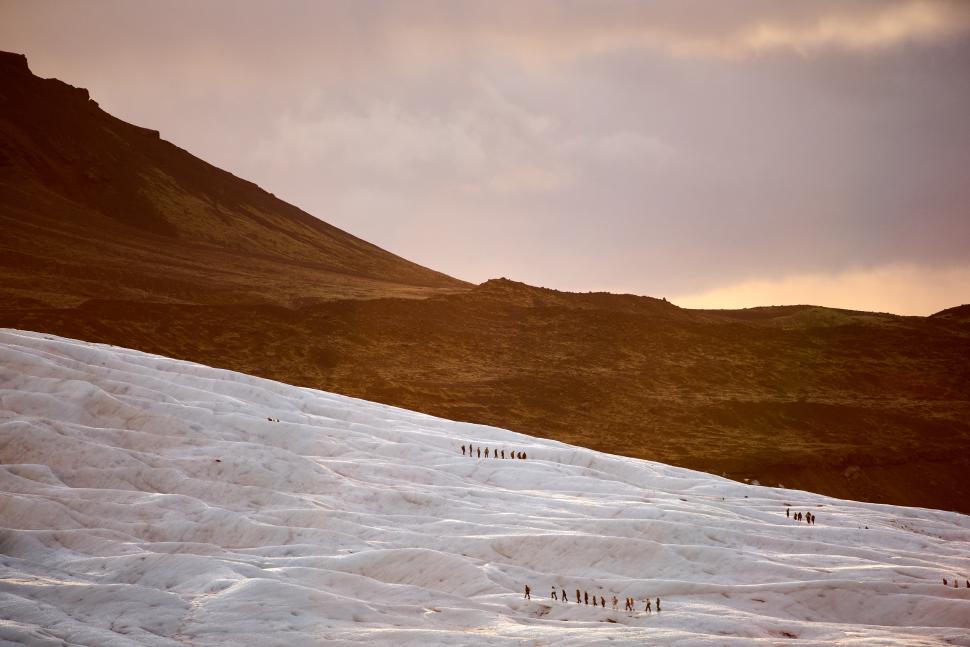

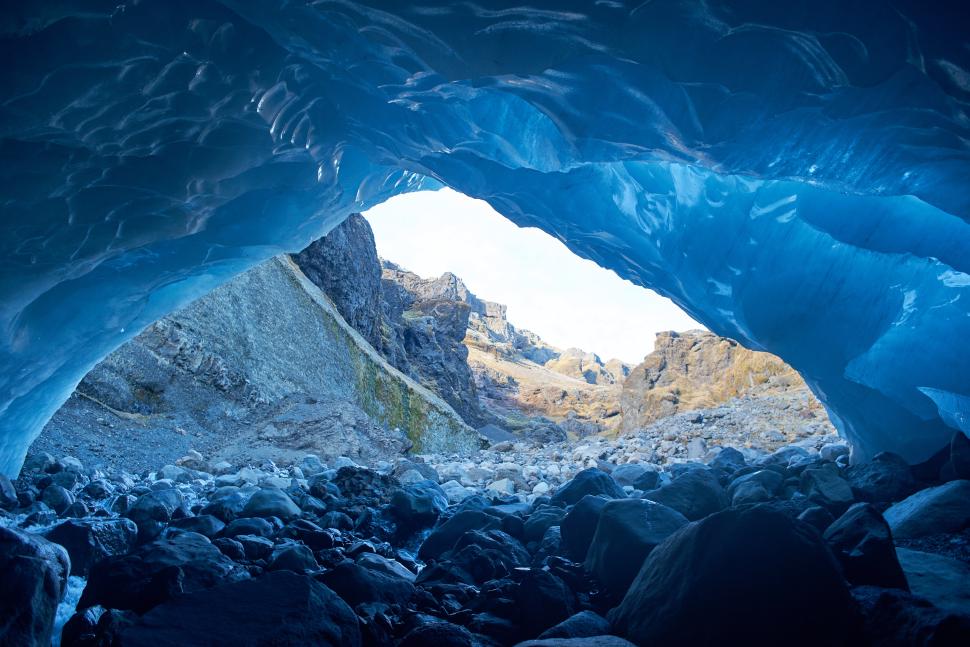
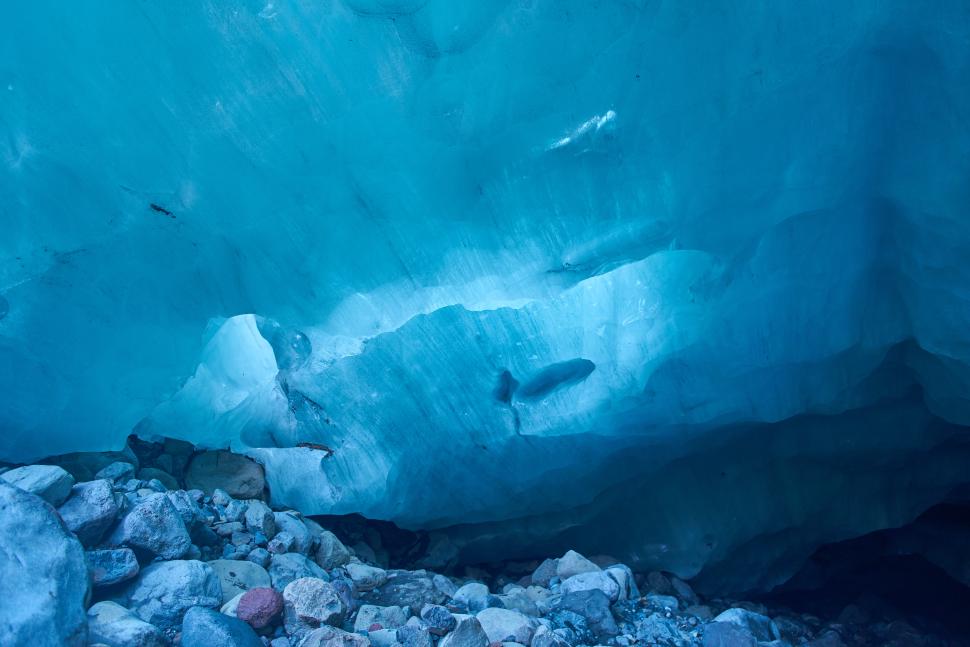
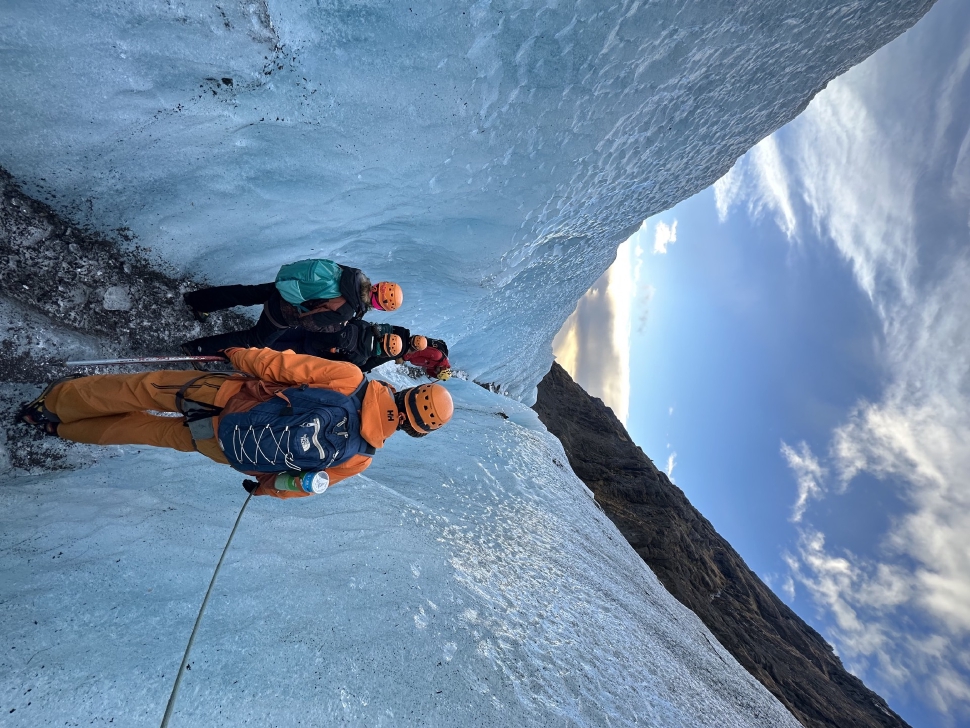
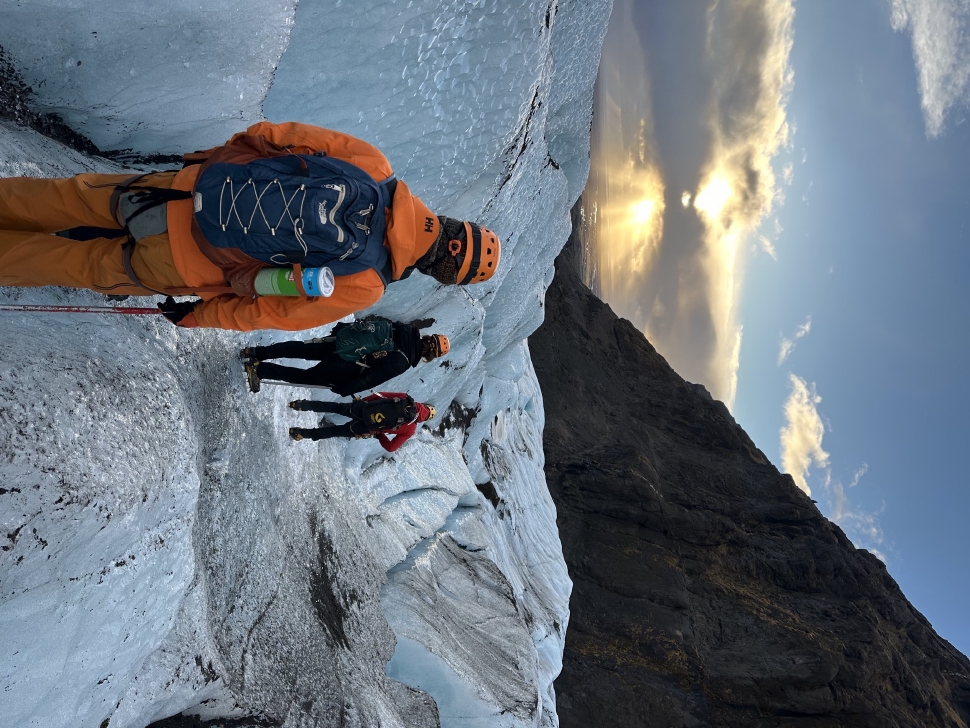
During this journey I was chased by unfortunate weather: on the north of the island, from where I had arrived a day before, the clouds dispersed and the sky became perfect for seeing the Aurora, whereas here, on the south, it’s the other way around, in the evening the sky was covered with the clouds and the light rain began. I didn’t have any chance to see the Northern Lights in such conditions, but I didn’t lose hope, I still had a few days of my trip ahead. As for the volcano eruption, it was silent: local authorities evacuated the town of Grindavik due to an earthquake near the eruption site, but there was no further development in the situation.
The next day, my destination was the surroundings of the glacial lagoon Jökulsárlón and the nearby Diamond Beach. This location is considered ideal for observing the Northern Lights. It takes about 7 hours by bus from Reykjavik, and some tourists spend up to 14 hours just to get to the glacial lagoon on a tour. It’s hard to imagine a more unpleasant day for such a journey: biting icy wind, drizzling rain, and a sky entirely filled with clouds. Neither I, nor the poor souls who had been breaking their backs for 14 hours on a tourist bus got to see the Aurora on that day.
However, even without the Northern Lights, this location is worth exploring; bright blue icebergs with grey-gray background of water and sky, black sand beaches with scattered ice shards, and crowds of tourists clustered around the parking area taking pictures of the ice. Interestingly, just about 300 metres from the car park, the beach is completely deserted.
Attempting to capture beautiful shots, I soaked my legs in the sea waves twice. After the first time, I returned to the car, put the heater on full blast, and dried all my wet clothes within an hour. After the second time, I was too lazy to go through the same routine, so I continued walking as I was. The next day, apparently, I regretted it — the symptoms of a cold appeared, but I quickly managed to suppress them.

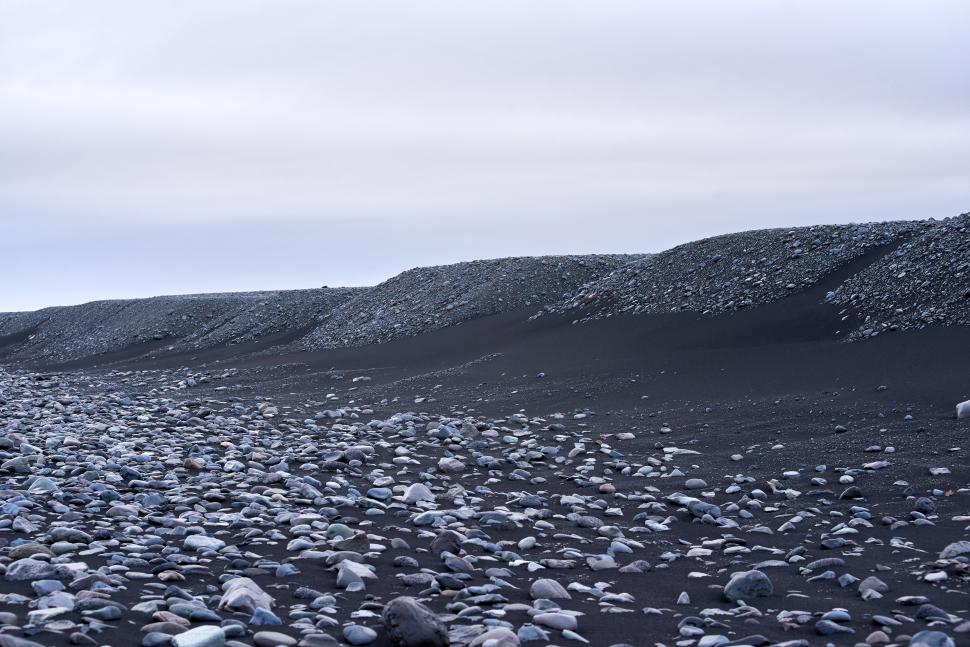
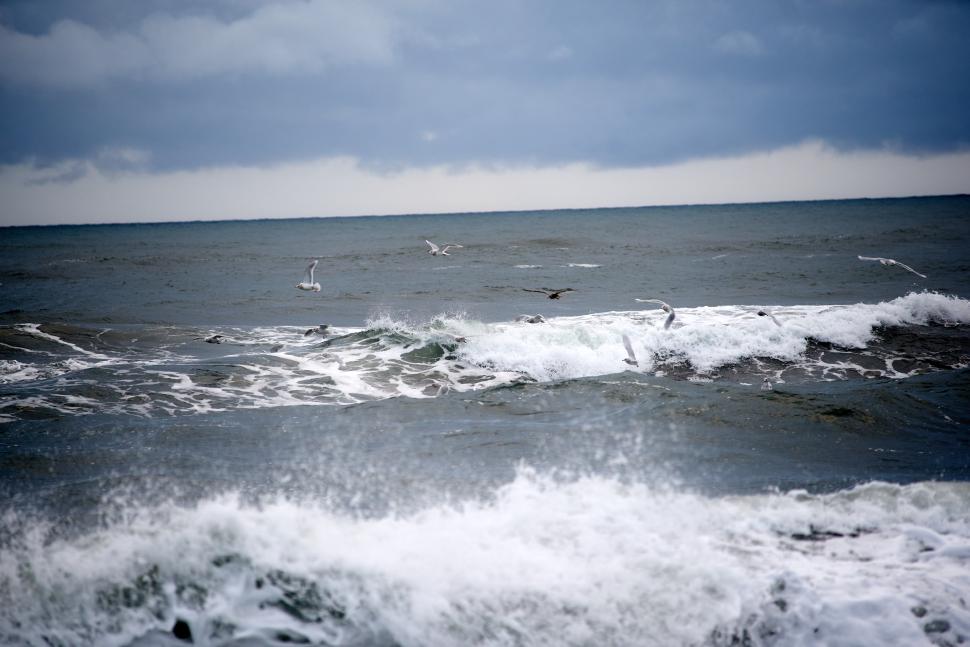
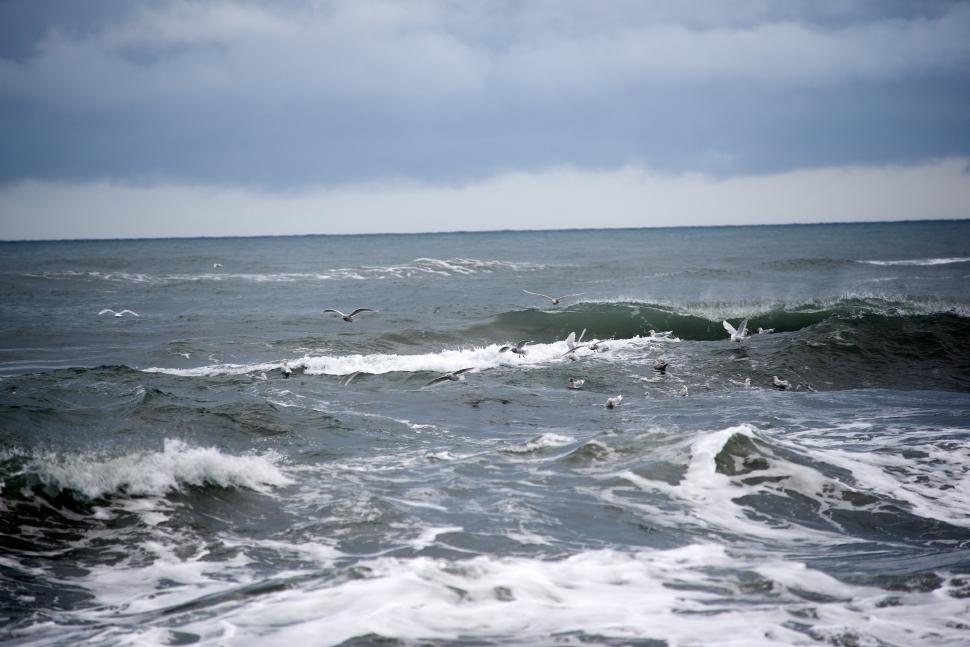
At this point, I started to worry that I hadn’t really experienced the Northern Lights on this trip despite my 3 a.m. wake up call. Today’s forecast didn’t inspire optimism, and I realised it was time to stop passively waiting for the Aurora and start actively hunting it. The next day, a journey to Reykjavik awaited me — not the ideal place for watching the Northern Lights, but it was still possible to catch a glimpse there.
Part 4. Reykjavik
On the way to Reykjavik I took one of the best photos, in my opinion, of the whole trip. I took this picture at the Golden Hour of the evening, which was around 3 p.m. In reality, the land here is brown and the rocks are grey, but the setting sun turned everything golden.
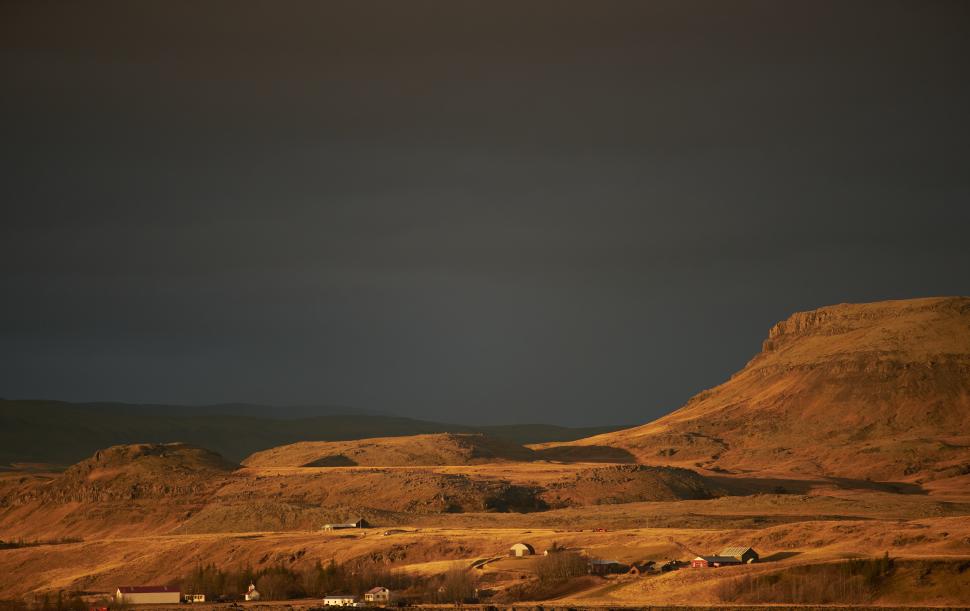
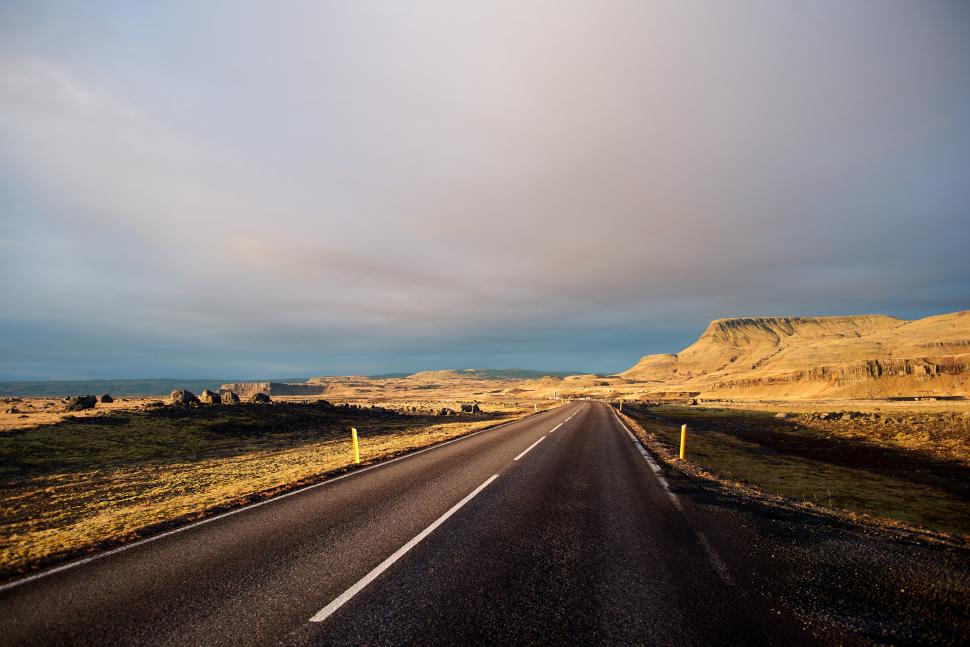
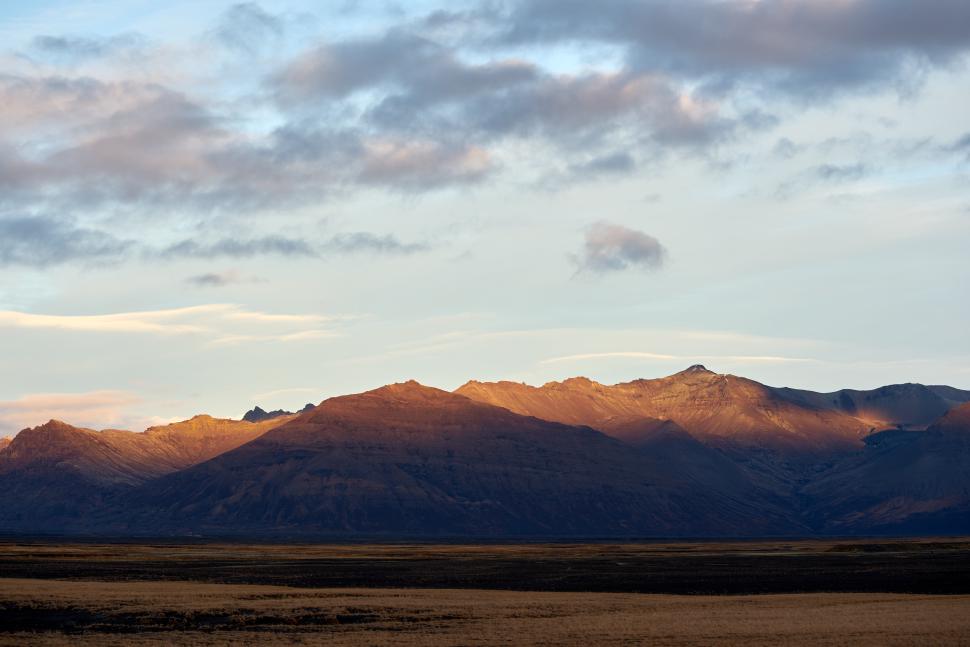
I reached Reykjavik in the evening, so going anywhere else didn’t make sense. I explored the city and found a good spot to observe the Aurora. The experience of being in Reykjavik is quite different from the rest of Iceland. It’s a noisy, bustling city with quite aggressive drivers. I felt here like I was in Moscow: heavy traffic, everyone in a rush, one native honked at me for what he thought was driving too slowly.
The next day, like all the previous ones, began with checking the weather forecast, and once again, it was disappointing: the chances of seeing the Northern Lights, at least around Reykjavik, and the chances of witnessing a volcanic eruption were slim.
On this day, I explored the key points of the Golden Circle. To keep it brief: without exaggeration, the number of tourists here is at least 20 times greater than in any other parts of Iceland I visited. The locations are undoubtedly interesting, but if you can, it’s better to stay away.
Gullfoss waterfall is not as tall as Dettifoss, but its distinctive feature is that it consists of two adjacent steps. This sets it apart from other waterfalls to me. Unfortunately, some walking paths were closed here for the winter, but unlike Dettifoss, it seems that the closed sections offer more interesting views.
Another point on the route near Gullfoss is the Haukadalur geyser valley. Here, the geyser Geysir, which all other geysers in the world are named after, is located. The geyser Geysir itself erupts extremely rarely, but the nearby geyser Strokkur does it every 10-15 minutes. It seems that the maximum concentration of geysers in the world is not in the geyser valley, but in this paragraph.

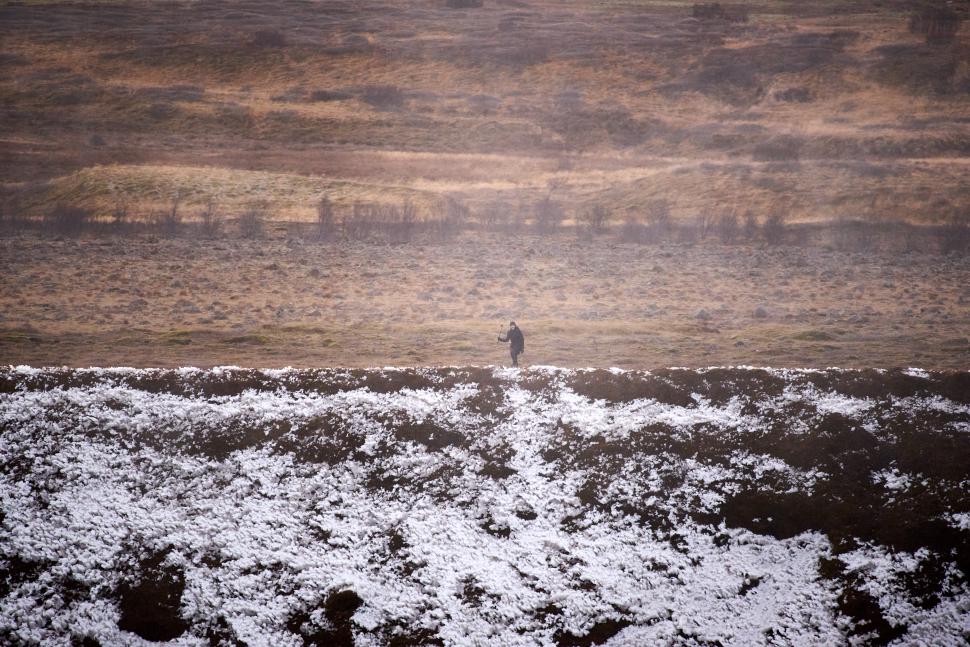
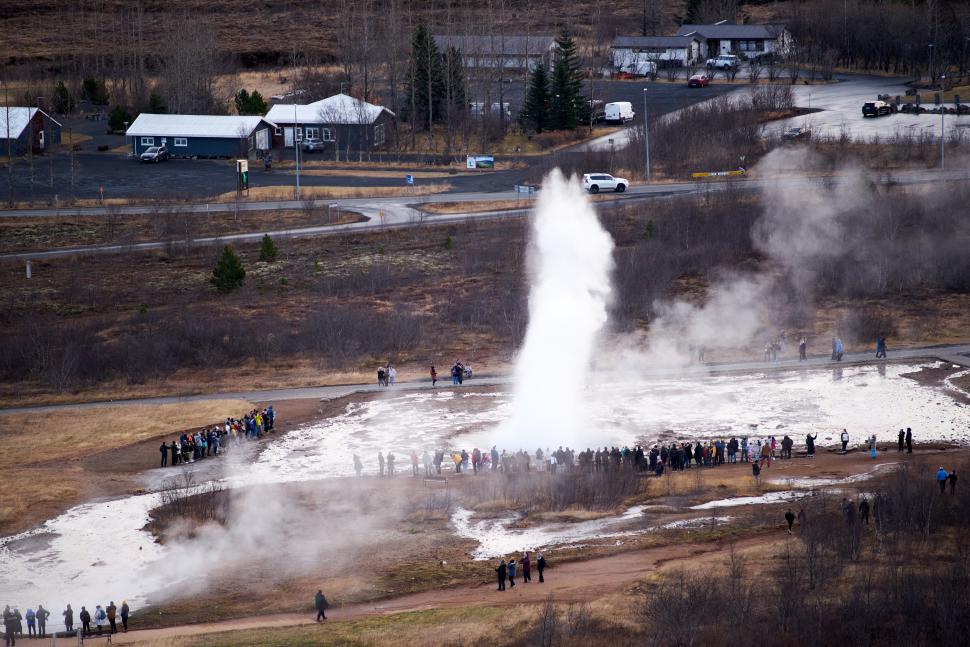
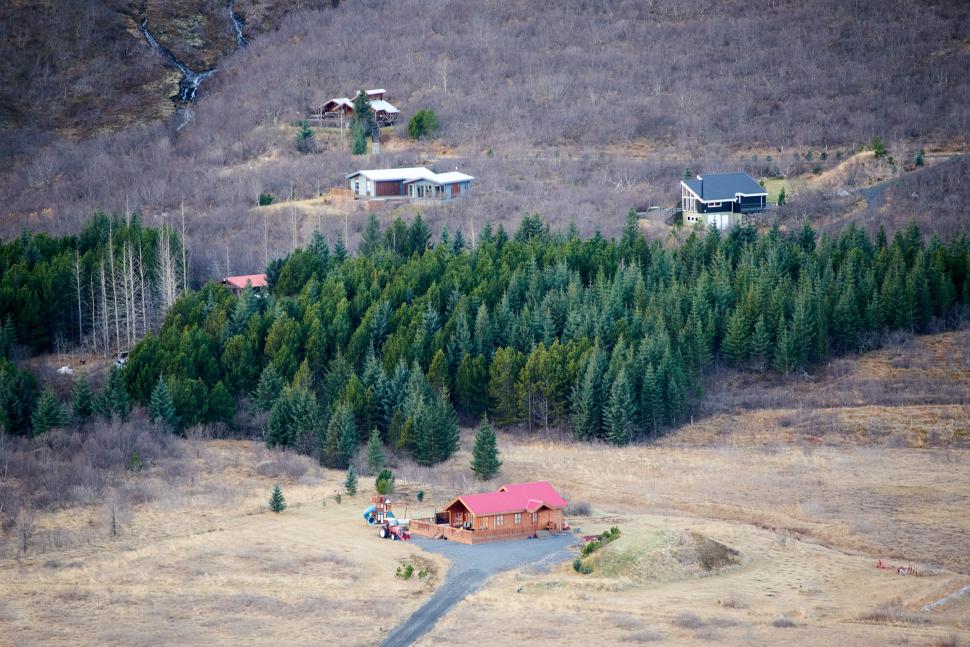
In the evening, within a hundred kilometres around Reykjavik, the entire sky was covered with a dense blanket of clouds, eliminating any chances for me to observe the sky… and just like that, suddenly the last day of my journey in Iceland crept up on me, so it’s time to admit that my initial plans to see the Northern Lights can be considered a failure. However, even without the Aurora, the trip turned out to be filled with vibrant impressions. If I were planning a similar route now, I would definitely remove all the activities related to the Golden Circle and other places around the capital and dedicate more time to the glaciers, not just Vatnajökull.
In the second half of the last day I had to return the car, so I had only a few hours left to go somewhere else. Iceland lies on the rift between the Eurasian and North American tectonic plates. In the rift area, a bridge was constructed to attract tourists, providing a passage from one plate to another. This bridge became one of my last stops in Iceland. I’m not sure, but it seems to me that this bridge is purely symbolic, and in reality, the fault line is almost certainly somewhere else.
A short distance from the bridge, there’s yet another valley with geysers, and I decided to make a stop. Perhaps, by that time, I was either tired from the journey or was all geysered-out, but another place with hot water fountains and sulphur-infused air didn’t impress me all that much.
After that trip, I returned the car and the next night at 2 a.m. I had to somehow get from the hotel to the airport. I still didn’t have any local currency, so I faced the same problem as on the first day: public transport doesn’t run at night, and taxi drivers only accept cash. In short, without leaving the rental office, I took another car for one day. In fact, it turned out to be even cheaper than a taxi: a taxi would have cost around 150 euros, and for a tiny Kia Picanto, which, by the way, turned out to be much nimbler than the piece of trash Duster I had been driving previously, I paid only 98 euros.
Aaaand… the fact that I had a car for the evening gave me one last chance to catch the Aurora! The weather around Reykjavik was terrible again: rain, clouds, poor visibility, but about a hundred kilometres from the city the forecast was promising! A hundred kilometres is just a one hour drive, I reasoned. I had about 10 hours before the flight, enough time to make a quick trip! In and out, a 20-minutes adventure! After about one hour, I found myself in pitch darkness, in the fog under pouring rain on some unfamiliar road, racing in a stream of cars. Visibility literally was limited to about 20 metres. I no longer wanted to go further, and had a fear of not being able to return in time, so maybe I should turn back? The only problem was that there was nowhere to turn! The road was completely invisible, not even the reflective poles along it could be seen, and the traffic (both oncoming and behind me) was quite dense. I felt like a grain of sand being carried away in this swift stream, and it was unclear how to break free. But suddenly, I saw a lifesaving exit! Hooray! Now I’ll turn off the main highway, get out of the stream, and calmly turn around… but no, some of the cars took the exit with me, and I still had nowhere to slow down and turn around. In short, another 15 minutes of such intense driving, both emotionally and physically, and I found an empty exit where I turned around and headed back to the hotel. I got back to the hotel by 11 p.m., and I had to leave for the airport by 2 a.m. In a nutshell, driving in Iceland at night, especially in bad weather, is an experience that is best avoided whenever humanly possible.
That’s all the most interesting things I have to write about. Overall, it turned out to be a fantastic adventure.
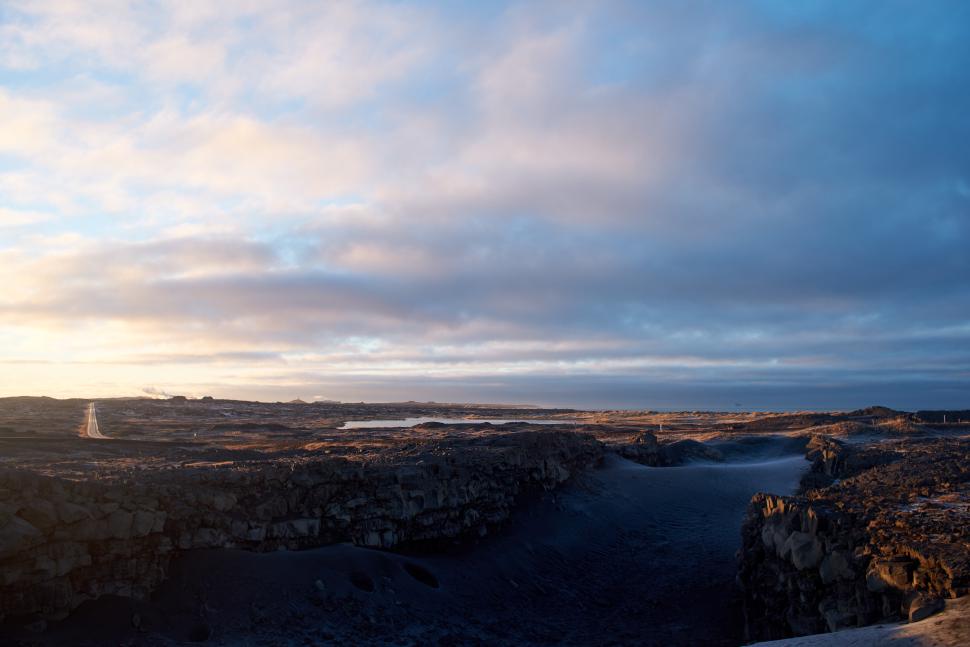
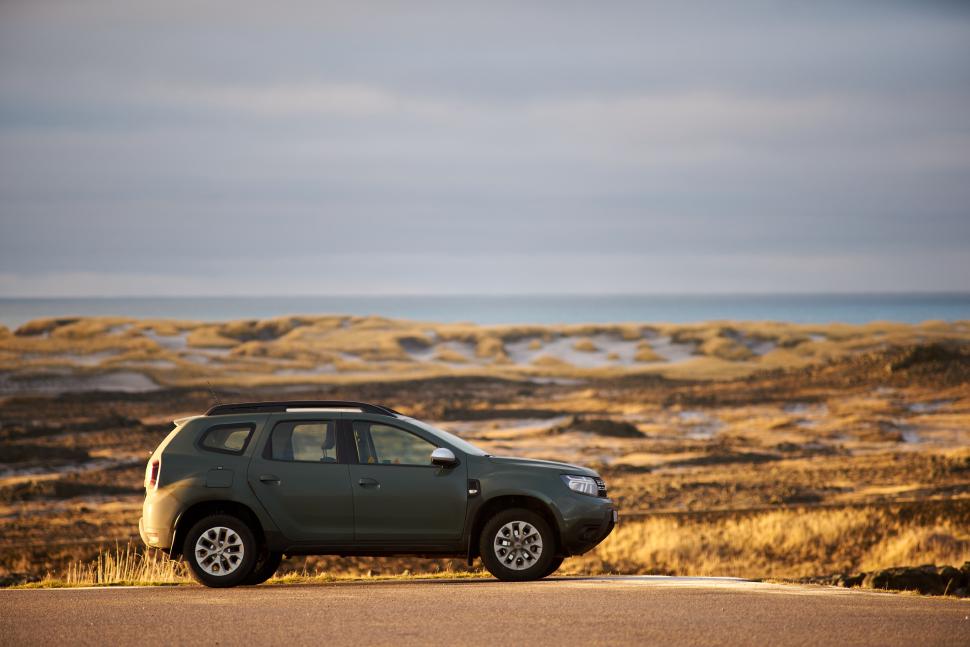
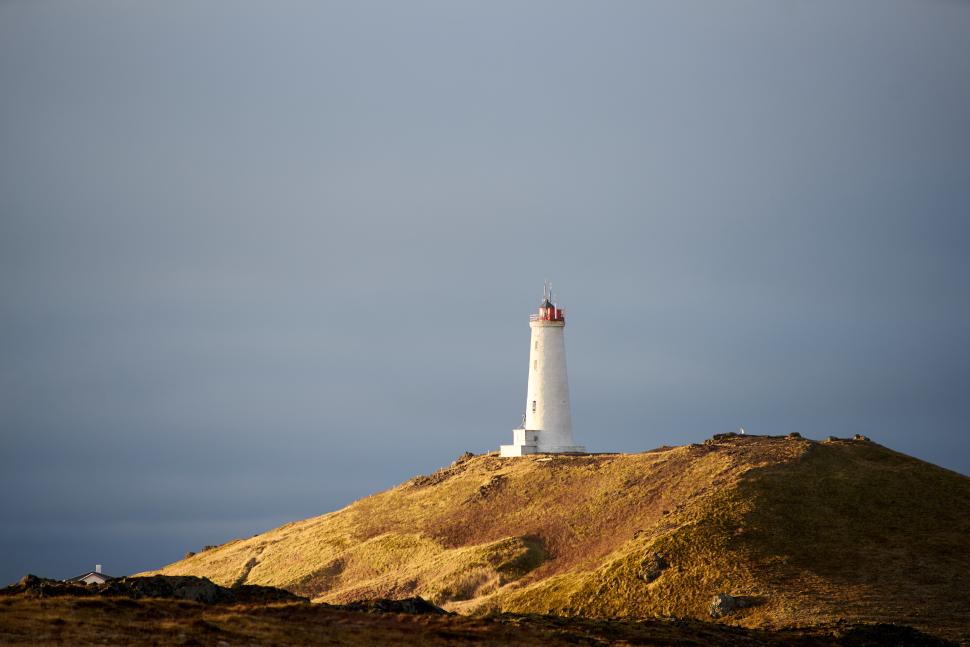
P.S. I’m finishing writing these lines on December 17, 2023, and the volcano still hasn’t erupted :/
P.P.S. The eruption occurred on December 18, 2023.

